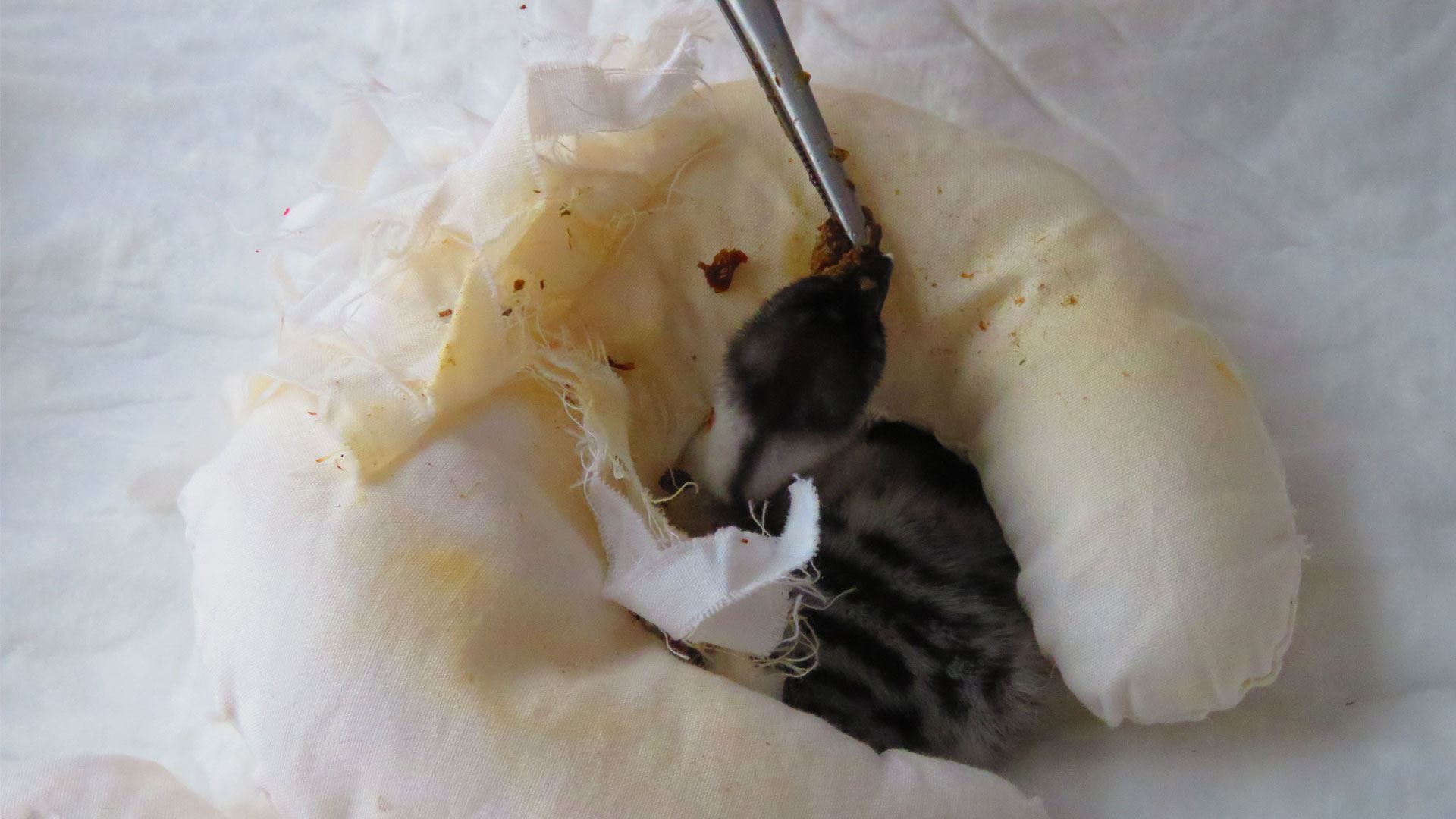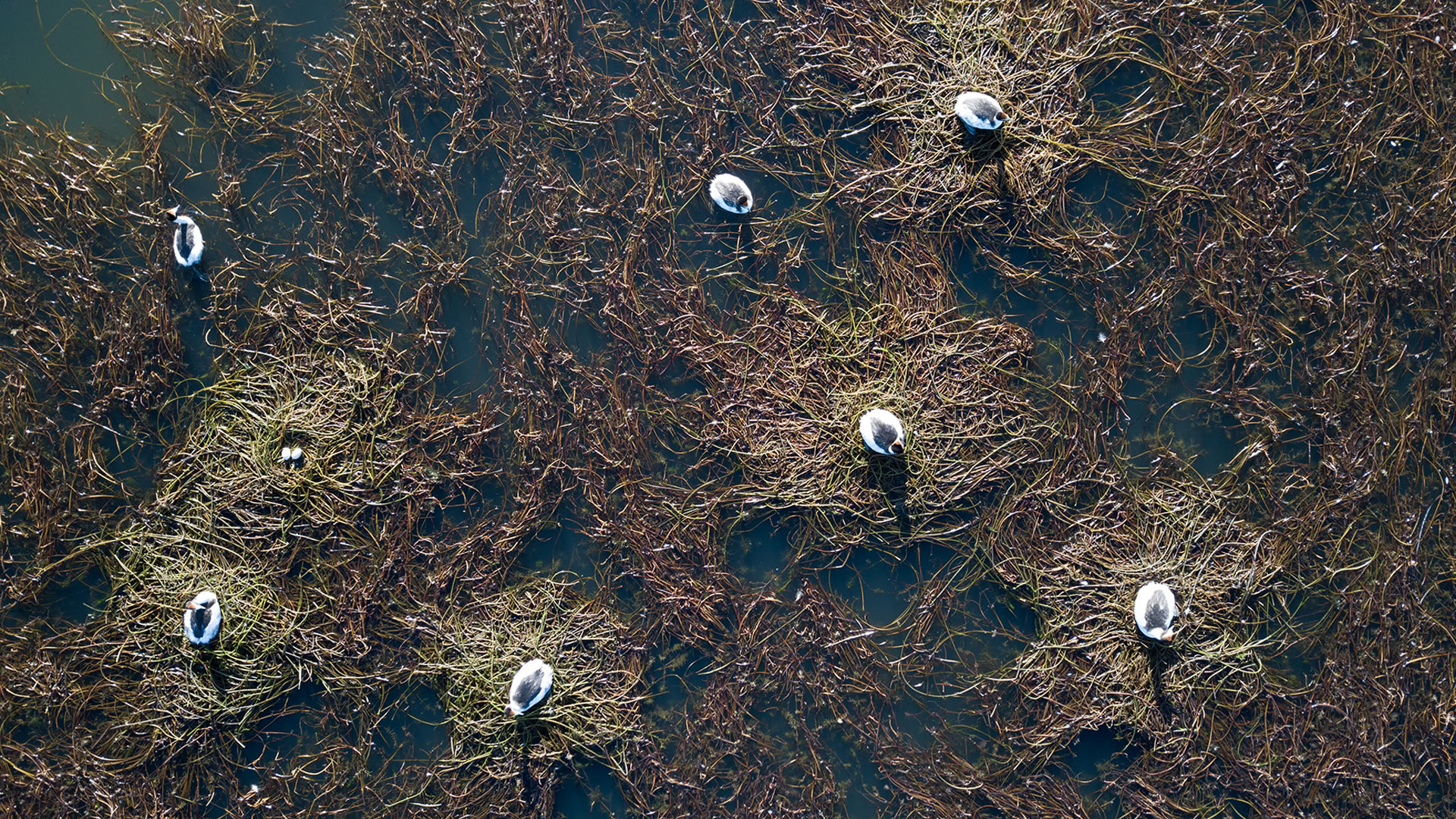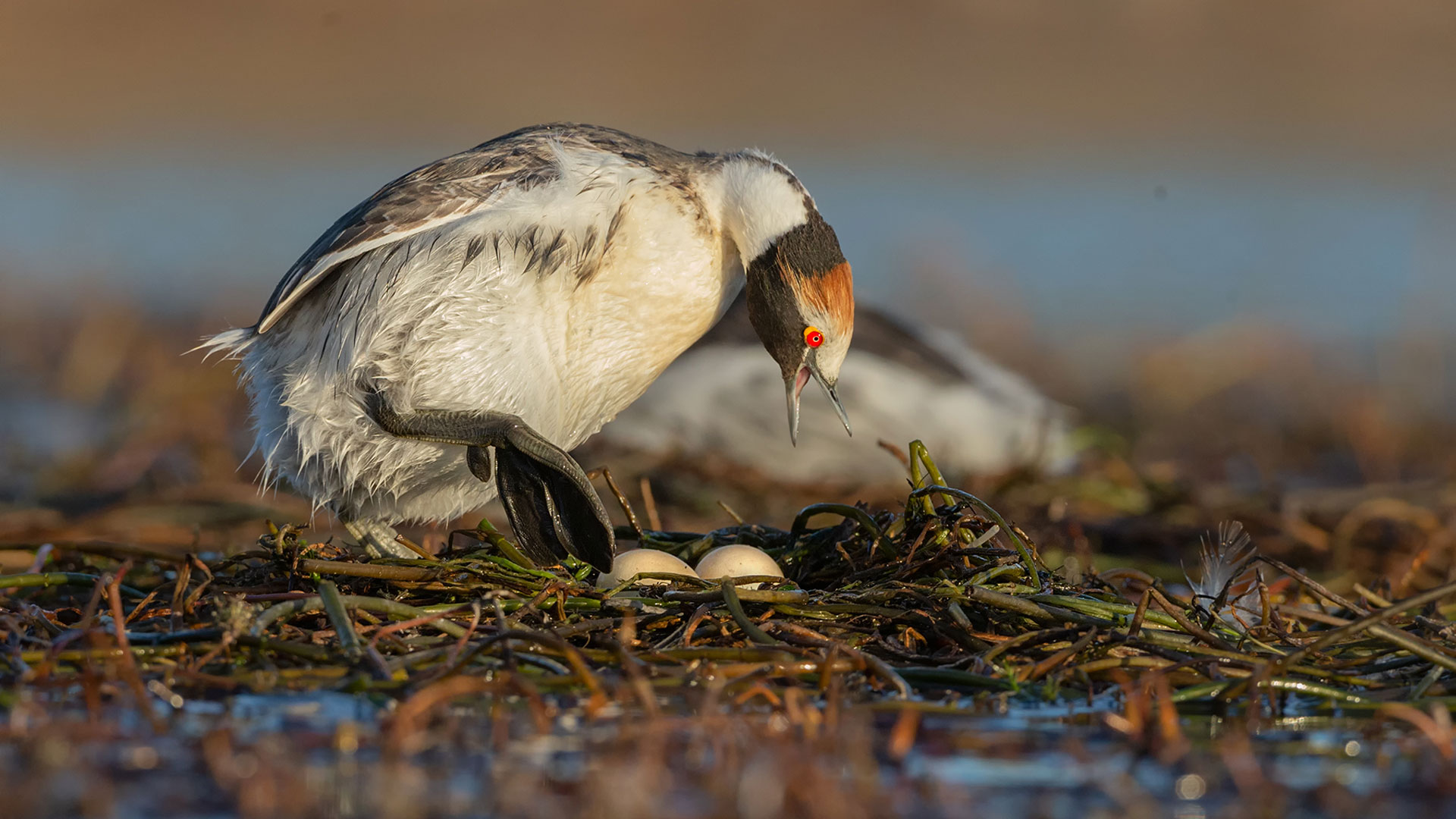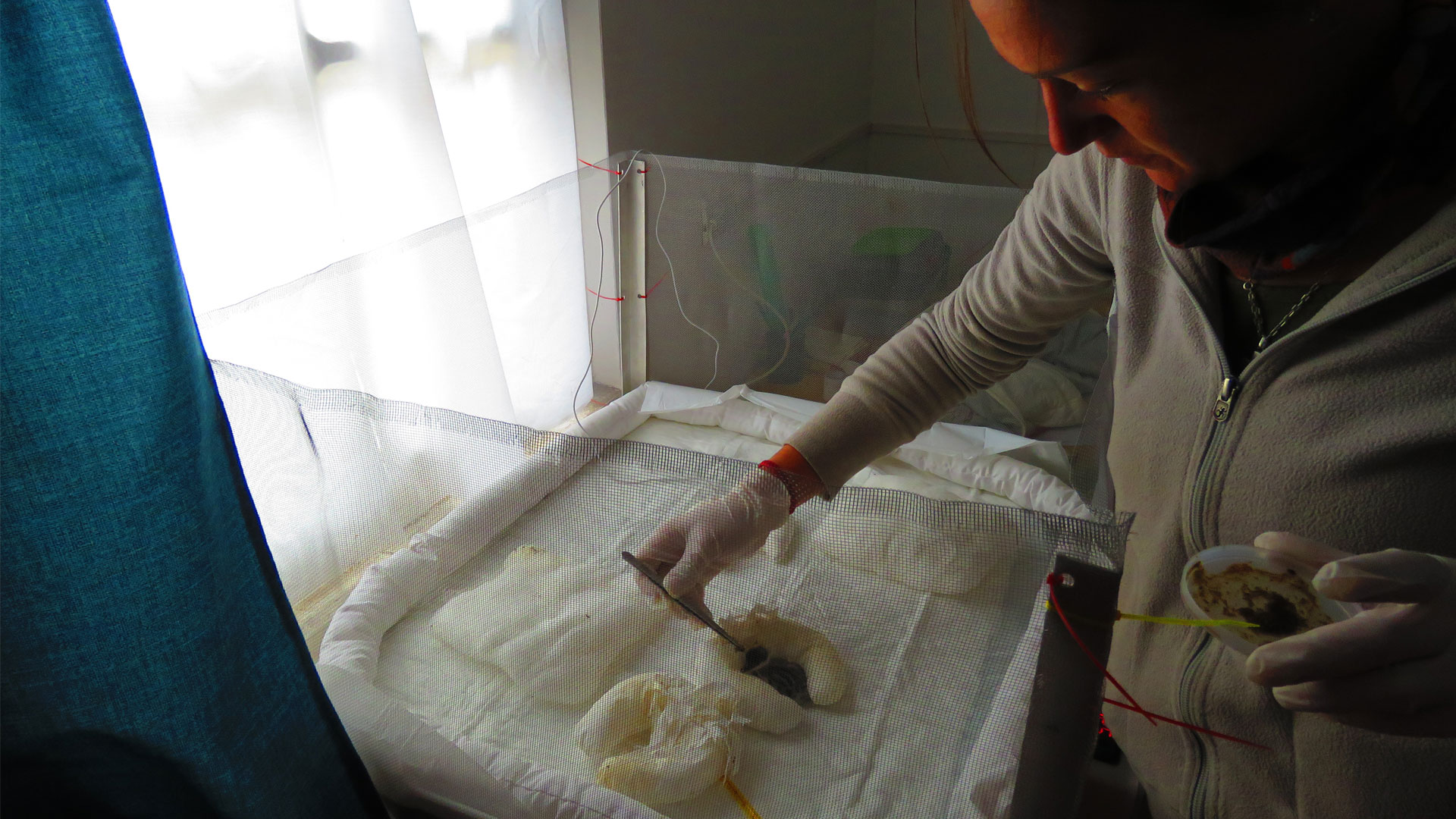Camping for sixteen weeks on Lago Buenos Aires plateau in Patagonia, scientists keep careful watch on the hooded grebes (Podiceps gallardoi) gathering in the lakes below. The flamboyant mohawked birds are endemic to Patagonia and it’s breeding season. Bizarre courtship dances are taking place in the water, couples tangoing and bobbing their heads in synchronicity. They construct elaborate floating nests out of milfoil, an aquatic plant, entire colonies stretching across the water -- but, despite the spectacle, their numbers are rapidly dwindling.
No chicks have been born in the wild for the last two breeding seasons. The species is facing many significant challenges to its survival. In the past eight-years, threats from invasive species like the kelp gull and American mink have had a devastating impact on grebe populations. Not only that, an increase in human activity and development in the area, plus the impacts of global climate change, have caused the hooded grebe to become critically endangered. NGO Aves Argentina, María Emilia Giusti, and her team of field biologists are aiming to remedy that through responding to these varied challenges and working towards the successful hand rearing of abandoned grebe eggs in their ex-situ breeding site.
Throughout the 2019 and 2020 breeding seasons, María and her team focussed on two main conservation strategies: setting up their colony guardian camps upon the plateaus and furthering their breeding program at the Hooded Grebe Project Team headquarters. The life of a colony guardian is a busy one. Keeping daily diaries on grebe numbers, monitoring behaviour, scouting out previously banded individuals, and recording video footage on feeding habits and nest building techniques were just of the crew’s regular day-to-day jobs.
“Even though one has to travel several hours to reach these very remote highland lakes, the feeling that prevails is not that you are in the middle of nowhere, but to the contrary, amidst everything,” says Maria. “The wind, the stars, the birds singing and overflying the steppes, the guanacos, pumas, lizards, the low bushes, working at a colony guardian camp is experiencing life in its most genuine expression.”
Video
The Hooded Grebe Project
Created by Programa Patagonia, this video shows the impressive landscape where the hooded grebe lives and the scientists working to save them.
Months spent checking for predatory American minks through an invasive species control programme and monitoring close to 350 lakes on different plateaus yielded only one hooded grebe breeding colony on the Strobel Lake Plateau, despite the successful lack of identified predators. Why so few colonies? The team’s most plausible hypothesis is that the spring temperature was too low, disrupting the natural nesting cycle, making it difficult for the grebes to find available lakes and the milfoil used to build their floating nests. Only six nests were found that season.
...But then in February, a strong Patagonian wind-storm destroyed the colony before their eggs could even hatch.
In a race against time, [the team] set out to recover and collect what they could. Five eggs were swiftly transported from the remote La Cascada lake to the Breeding Facility incubators upon the plateau, an approximately 8-hour trip through the Patagonian wilderness in specially prepared refrigerators. “Although it was sad,” says María, “we had seen it coming and we knew we had made the right choice to artificially incubate the eggs.”
It was the first time the team completed an almost entirely artificial incubation cycle. Three healthy chicks pipped their way through the eggs, no doubt thanks to the thermal efficiency of the new facilities and the breeding protocol established in previous seasons. For the first few weeks of the birds’ lives, scientists tried out three different feeding protocols, popping the chicks in swimming baths to stimulate their gastrointestinal motility and decrease gassy bloating. María describes the rearing-process as “tiresome, as attention to the eggs and chicks needs to be constant even at night. We organized shifts, but still as long as the process lasts, we are all too focused on the eggs and chicks to get much sleep and although every year I promise myself I am not getting attached, I can't avoid feeling my heart sink every time an egg or a chick fails.” Despite the setbacks of the strong Patagonian wind, [the hooded grebe team]’s diligence and initiative resulted in important learnings for the species.
María Emilia Giusti, NGO Aves ArgentinaHowever, over the years working on this project, I have learned that protecting a species is much more than doing research and direct conservation actions. It is about sharing the love and awe we feel for the natural world, and the fear it might be destroyed because of human greed.
“Working with an endangered species has a very emotional component and I really wish with all my heart to see hooded grebes thriving again on these austral highland lakes, start several colonies, raise their chicks,” María adds. “But because the threats it faces are multiple, sometimes protecting the grebe on a long term seems a challenge beyond our work capacity. However, over the years working on this project, I have learned that protecting a species is much more than doing research and direct conservation actions. It is about sharing the love and awe we feel for the natural world, and the fear it might be destroyed because of human greed. It is about creating pride and a sense of belonging amongst the local communities to their natural surroundings, so that human development can only be imagined in accordance with the natural world and the species we share our land with.”
Through Auckland Zoo’s Small Grants Programme we were able to commit vital funds to the Hooded Grebe Project and their important work. This meant they were able to purchase critical monitoring equipment like binoculars and field cameras as well as incubators, feed and consumables so that they could attempt to save the chicks that were abandoned. Every visit to Auckland Zoo, donation or purchase from our Zoo Shop allows us to support valuable causes like this around the world, providing a future for wildlife and the wild places they live in.
The work of the Hooded Grebe Project Team isn’t done yet. They will continue to complete their hand-rearing protocol and work to gradually increase the number of juvenile hooded grebes in the colony over time. Other team members are currently studying the changing weather patterns and proposing ways to mitigate its effects, increasing the availability of safe lakes and milfoil for the hooded grebe colonies. Next summer, and in the summers after that, María will return to the plateaus and set up more guardian colony camps at whichever lake the hooded grebes choose to construct their milfoil village. We’re pleased to have been able to fund this important conservation work and further efforts to save this iconic bird.







